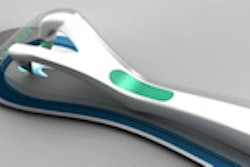The majority of Hispanics in the U.S. believe more information about good oral health habits, access to affordable oral healthcare, and more Hispanic and Spanish-speaking dentists and dental hygienists in their communities would help them "a lot" in achieving better oral health, according to a survey conducted by the Hispanic Dental Association (HDA) and sponsored by Procter & Gamble brands Crest and Oral-B.
The findings were presented November 3 during the HDA annual meeting in San Diego.
The survey, part of an initiative by the HDA, Crest, and Oral-B to raise the profile of the state of oral health among Hispanics, examined perceptions and attitudes about oral healthcare, barriers toward achieving good oral health, and the role of influencers in passing along oral health habits.
The survey was conducted from July 28 to August 24, 2011, among 1,000 Hispanic adults and 1,000 adults from the general population age 18 and older who live in the continental U.S. (margin of error ± 3 percentage points at the 95% confidence level).
The following are some specific findings from the survey:
- When asked if cavities will go away on their own if you brush regularly, nearly 30% of the survey respondents said they believe this statement is true or did not know the answer, when in fact the statement is false.
- About half of the survey respondents also incorrectly answered true/false statements or were uncertain about the importance of brushing versus flossing, whether bleeding is normal during brushing, and if mouthwash provides oral health benefits beyond just freshening breath.
- Of the respondents, 45% said they lack dental insurance, and 18% have not visited the dentist at all in the past two years, compared with 12% of the general population.
- Approximately six in 10 survey respondents felt that a higher representation of Spanish-speaking and Hispanic dentists/hygienists in their community would help them "a lot" in achieving and maintaining better oral health.
Following the survey, the HDA, Crest and Oral-B have collaborated on an informational brochure highlighting key facts and debunking top misperceptions about oral care that will be placed in dental offices and other public areas across the U.S.



















